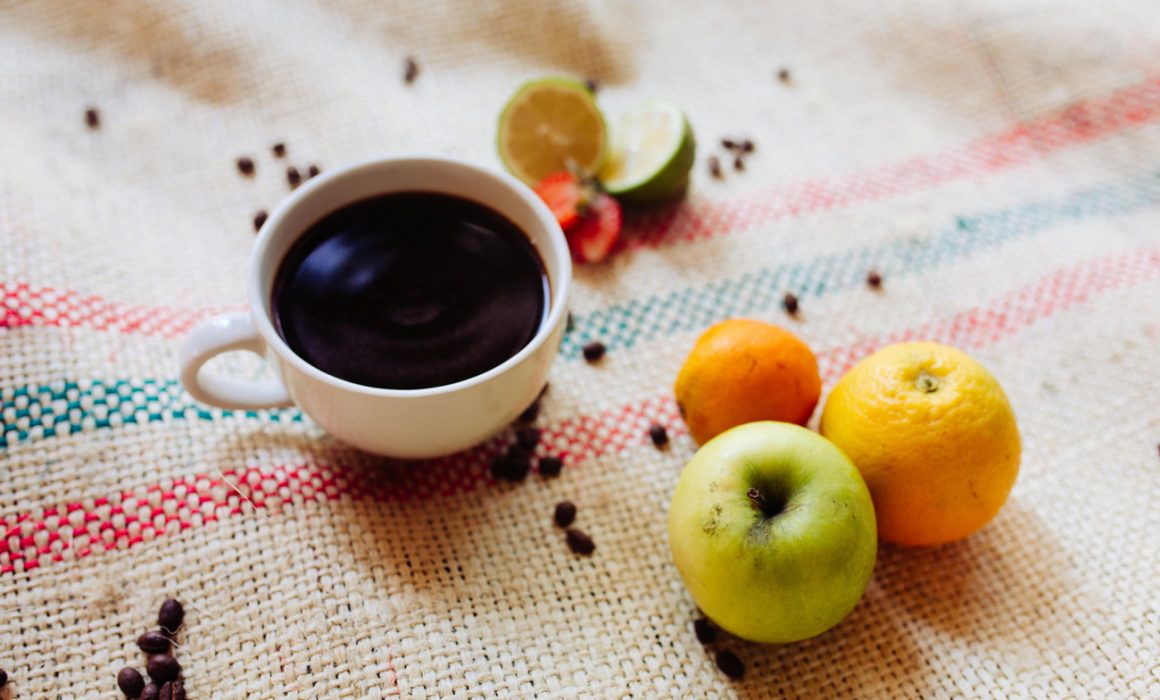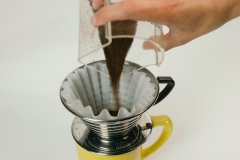Beginners must see the introduction to coffee knowledge _ basic knowledge of coffee _ complete knowledge of coffee theory

Professional coffee knowledge exchange More coffee bean information Please pay attention to coffee workshop (Weixin Official Accounts cafe_style)
Many people think of coffee as black powder in a jar, but forget that coffee actually grows on trees and has seasonal and periodic fruits. It needs to undergo a complex series of manual polishing before it can be turned into a warm drink with rich fragrance. The perfect transformation of a cup of coffee, or start with coffee beans, today and everyone to talk about coffee beans those things.
What is coffee?
Coffee is simply a crop. It grows on coffee trees the size of apples and pears. It usually takes a year from flowering to fruiting. Seedlings need five years to mature to full productivity. Mature saplings can last a hundred years. The average tree produces ten pounds of coffee berries per year, or two pounds of beans. Coffee trees also have high requirements for their growing environment. Fertile soil, great temperature difference between morning and evening, plenty of rainfall, and plenty of shade. Almost all coffee growing activity is concentrated in the coffee belt. (The coffee belt refers to the area between 25 degrees north latitude and 30 degrees south latitude. South America, Africa, South Asia) Strict growing environment requirements and high labor costs lead to high prices for quality coffee beans.
Quality of coffee beans
The quality of coffee beans is reflected in many ways. When choosing coffee beans, you need to understand factors such as coffee size, density and moisture content. Secondly, we need to have a deeper understanding of the processing of coffee beans, pay attention to some necessary details in the processing of coffee beans, and how coffee beans are different under different processing methods. After understanding the physical characteristics of coffee beans before roasting, you also need to check whether there are defective beans, such as some fermented beans, dead beans, black beans, moth beans, incomplete beans, etc., which will affect the flavor of coffee.
Types of coffee beans
There are more than 100 coffee varieties in the world, two of the most popular are Arabica and Robusta (Canephora).
Tree species: Arabica (and its hybrids)
Coffee advertisements often emphasize that they use 100 percent Arabica coffee. Yes, but Arabica is superior in terms of price. Arabica beans cost twice as much as Robusta beans.
Typica:
Closest to Arabica, widely cultivated in Central and South America. Excellent flavor, but intolerant to leaf rust, low yield, requiring considerable shade trees. Therefore, most of the coffee grown now is an improved variety of Tibica.
Bourbon:
A mutant subspecies of Tibica, it is one of the oldest coffee species along with Tibica. It was named after Tibica, which mutated on Bourbon Island (now Reunion) in the Indian Ocean during the process of transplantation. Harvesting is slightly higher than Dibica, the particles are small and round, and the central line is S-shaped.
Caturra:
The bourbon mutant found in Brazil has high yield, high quality and resistance to leaf rust, but it is also expensive to grow. More produced in the middle and high altitude areas, sour and astringent taste are relatively strong.
Mundo Nove:
Natural hybrid of New World, Bourbon and Sumatra with strong environmental adaptability, resistance to pests and diseases, and high yield. The disadvantage is that the tree height is higher and it is not suitable for harvesting by harvesting machine. Mondonovo balances acidity and bitterness and is now the main cultivated variety in Brazil.
Catuai:
A hybrid of Cadura and Mondonovo, crossed because Mondonovo was too tall and crossed with Cadura, a tall tree. Kaduai has high yield and strong environmental adaptability. However, the harvest life is short, the taste is monotonous and lacks body.
Amarello:
The original name is "yellow", because the general coffee fruit is red after ripening, while the fruit of Amareo is yellow after ripening, so it gets this name. Higher yields.
Timo:
A hybrid of arabica and robusta that is highly resistant to leaf rust. (The original name is Timor Island, which has nothing to do with Captain Timo.)
Catimor:
From its name, it was a hybrid of Timo and Kadura. Catimo is the most productive commercial variety at present, with large fruit and strong adaptability to environment, but its flavor is inferior to Bourbon and Cadura when planted at high altitude.
Maragogype:
Tibica mutant. Big beans. It tastes poor but looks good.
Kent:
A hybrid of tibica, india, having a high yield and resistance to leaf rust.
Variedad Colombia:
The hybrid of Cartimo and Cardura, with good disease resistance, high yield and no need for shade trees, is currently the main cultivated variety in Colombia.
Tree species: Robska
Also known as medium seed. Robusta is technically a Canephora species, but only Robusta is commercially available. Native to Congo, Africa, it has strong vitality and resistance to leaf rust. The yield and coffee extract are also high, and the caffeine content is even more than twice that of Arabica. But the flavor is generally inferior to Arabica. Now more used to make instant coffee, usually we buy bags of Nestle or Maxwell instant coffee are Robusta beans.
Coffee aroma, from coffee roasting
The aroma and taste of coffee are produced only after roasting. During the roasting process, the water content of the green coffee beans is slowly released, the weight is reduced, the color is deepened, the volume is expanded, and the oil containing aroma is slowly released. In addition, a large amount of chlorogenic acid originally contained in raw beans will gradually disappear with the baking process, releasing a pleasant fruit acid, and its taste varies with the length of baking time. Below you can see how the shape of the coffee beans changes during roasting.
How long beans are baked affects their appearance and taste. The simplest way to judge is that the longer the beans are roasted, the less sour they are and the less caffeine they contain. Below we briefly list the coffee flavors produced by different roasting times for your reference.
Light Roast:
It has a strong grassy flavor, insufficient aroma, and is rarely used to taste.
Cinnamon Roast:
High acidity, slightly aromatic, often used to make American coffee.
medium roast:
It tastes sour and bitter, with moderate aroma, retaining the original flavor of coffee beans, often used to make American coffee or coffee blends.
High Roast:
The taste is rich in layers, sour and bitter balance and slightly sweet, aroma and flavor are good.
City Roast:
Lower acidity than medium roast, perfect for coffee flavor, standard roast, most popular with the general public.
Full City Roast:
Bitterness is stronger than sourness, residual taste is sweet, aroma is full, and it is often used to make iced coffee or black coffee.
French Roast:
Bitter, intense taste, not sour, with smoky aroma.
Italian Roast:
Bean surface has oily, bitter strong, have burnt taste, mainly used to do Italian espresso.
From the above introduction, you can get the basic knowledge of identifying coffee beans, and find out your favorite taste by actually tasting different coffee bean flavors.
After reading this article, congratulations on entering the world of coffee. However, these refer to the tip of the iceberg in the huge system of coffee, and the evolution of such hypocritical crops to become the largest beverage in the world today must have its unique charm.
1. Coffee trees and coffee fruits?
Coffee tree is an evergreen shrub or small tree of Rubiaceae. The flowers are white and the leaves are oval with jasmine aroma. coffee beans are fruits grown on coffee trees, such as machines or artificial removal of exocarp, pulp, endocarp and so on. Coffee beans usually have two seeds inside the fruit and rarely have one or three of them. an anatomical picture of coffee flowers and coffee fruits
Coffee Flower and Fruit
Coffee cross-section
Coffee, coffee beans, coffee drinks
two。 The origin of coffee
The birthplace of coffee is in the Ethiopian region of eastern Africa, where the volcanic zone of the Tropic of Cancer centered on the equator (called the coffee belt or coffee area) is the most suitable for planting coffee trees: the three primary species of coffee that will have an average temperature of 15-20 degrees per year at an average temperature of 1500-2000mm are the elevations at which Alabika and Libiza respectively grow. For: Arabica 500m-2000 m Robsta 200m-500m low-lying area Arabica coffee accounts for about 70-80% of the global production, Arabica coffee has weak disease resistance, Robsta has strong disease resistance, bitter but not sour, and poor aroma is usually used as instant coffee circulation and market (in recent years, it will also be carefully processed as a very small amount of boutique coffee)
Comparison table between Arabica and Robusta
The difference between coffee species
3. About defective beans
The defective beans of coffee are divided into: black bean sour beans, broken beans, unripe beans, shell beans, bean worms, cocoa, shelled beans, moldy beans, stone dead beans and other defective beans. The following picture shows the classification and characteristics of defective beans.
Classification of coffee defective beans
The five flavors of coffee
4. Coffee picking and processing methods
The picking of coffee can be divided into manual picking and machine picking, that is, after the coffee is ripe, it is easy to mix the immature fruit and the branches of the tree by picking the ripe coffee beans manually, and when the coffee beans are picked, they can be processed by natural dry washing and dry washing, that is, the so-called sun treatment (throwing coffee beans on the ground or placing them on the ground. Different ways of washing and honey treatment will give coffee a different special flavor, usually with higher sweetness, mellow water washing and clean acidity. Honey treatment is divided into yellow honey and black honey according to the degree of retention of pectin content in coffee.
Yellow honey, red honey and golden honey
5. Coffee producing and consuming countries
Brazil is the world's largest coffee producer, accounting for 1/3 of the world, followed by Vietnam. China, on the other hand, is mainly grown in Yunnan, and coffee production will continue to grow. the consumer of coffee will be ranked by the United States, followed by Brazil, Germany, Japan, France, Italy.
6. Roasting and preservation of coffee
When the coffee beans are dried by removing the outer pericarp, the pulp and the endocarp (parchment), the raw beans with a moisture content of about 11% and 13% are left to transform the raw coffee beans into ripe coffee beans after proper roasting, that is, the roasting of the coffee is accompanied by the color change of the coffee beans themselves (from light to dark green to brown to black). As the volume increases, the quality becomes softer and the aroma substances increase, that is, the physical and chemical changes are divided into Maillard reaction and caramelization reaction. Roasted coffee needs to be protected from light, moisture, high temperature and air preservation.
Coffee raw beans vs coffee ripe beans
Different roasting degrees of coffee
7. Bean grinder and coffee maker
Bean grinder and coffee machine are usually semi-automatic and fully automatic bean grinder is usually composed of power supply bean warehouse cutter switch and other parts. The cutter head of the bean grinder is divided into a flat knife and a conical knife to grind the cone knife and the cutting flat knife is easy to generate heat to make the profile of the brown machine.
The disadvantage of coffee aroma substances is that coffee is unevenly ground to produce too much fine powder, resulting in uneven extraction. The following picture shows the structure of the bean grinder cutter head and coffee machine.
Flat knife and conical knife of bean grinder
Coffee machine structure
8. About gold cup extraction
Gold cup extraction means gold extraction, that is, the best state of coffee extraction and the best taste with rich aroma and pleasant flavor. the extraction rate and extraction concentration involved in gold cup extraction is an interval value and the extraction concentration of SCAA and SCAE is slightly different. The figure below is the gold cup extraction chart of SCAA.
Schematic diagram of gold cup extraction
END
Important Notice :
前街咖啡 FrontStreet Coffee has moved to new addredd:
FrontStreet Coffee Address: 315,Donghua East Road,GuangZhou
Tel:020 38364473
- Prev

An extra cup in Yili Coffee Mall? Ili Coffee physical Store Price list _ illy how much is Italian coffee
Professional coffee knowledge exchange more coffee bean information please pay attention to the coffee workshop (Wechat official account cafe_style) have looked at their online prices, generally bottled, a can of about 100, or quite cheap, than going to the store to buy coffee to drink a lot of cost-effective ~ their products are imported from Italy, the quality and packaging are very good, now domestic prices, pork is also inconvenient
- Next

[recommended for entry equipment] what are the types of hand coffee maker? which brand is good for hand coffee equipment?
Professional coffee knowledge exchange more coffee bean information Please pay attention to the coffee workshop (Wechat official account cafe_style) Coffee utensils are various, a little configuration, slowly more and more tools, while studying, while playing the process, the coffee also becomes interesting, the home utensils have been tidied up, the process of separation, the experience of life has also been cleaned up
Related
- Beginners will see the "Coffee pull flower" guide!
- What is the difference between ice blog purified milk and ordinary milk coffee?
- Why is the Philippines the largest producer of crops in Liberia?
- For coffee extraction, should the fine powder be retained?
- How does extracted espresso fill pressed powder? How much strength does it take to press the powder?
- How to make jasmine cold extract coffee? Is the jasmine + latte good?
- Will this little toy really make the coffee taste better? How does Lily Drip affect coffee extraction?
- Will the action of slapping the filter cup also affect coffee extraction?
- What's the difference between powder-to-water ratio and powder-to-liquid ratio?
- What is the Ethiopian local species? What does it have to do with Heirloom native species?

